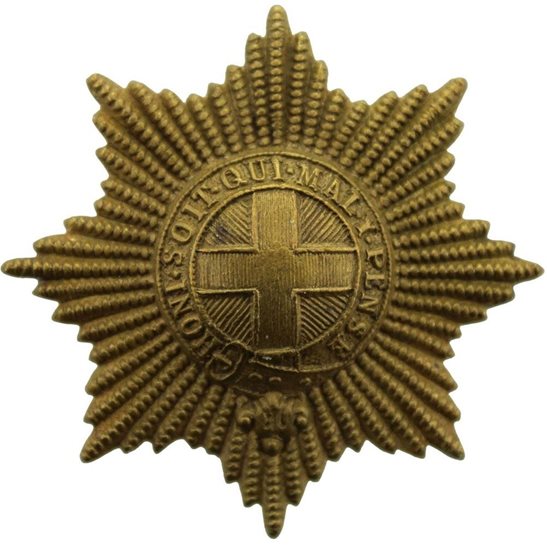Personal Details
Born: 9 August 1890 in Whitchurch, Shropshire and baptised on 29 August the same year in St. Alkmund’s Parish Church, Whitchurch and known as Jack.
Family: He was the third of six children born to Arthur Joyce, a clockmaker, and his wife Jessie. He married Dorothy E Owen in 1938 in Shrewsbury, Shropshire; no children can be traced for the marriage.
Residence: From the time of his baptism until at least 1891 he was living with his parents and siblings in Chester Road, Whitchurch. The 1901 census shows their address as 40 High Street, Whitchurch and by 1911 they had moved to The Beeches, Chester Road, Whitchurch. ‘Joyce of Whitchurch Clockmakers 1690 – 1965’ records that he emigrated to Canada, joining the Royal North West Mounted Police in April 1912, serving with the force in Alberta, Saskatchewan and Manitoba until July 1914. He returned to the UK aboard the SS Missanabie, arriving at Liverpool on 24 January 1915. In 1917 when he was discharged from the army his address was 44 Station Road, Whitchurch (This was the address of his mother who by this time had been divorced from his father). In 1939 he was living at Sandford House, St Julian’s Friars, Shrewsbury.
Education: He was admitted to Whitchurch Boys Grammar School on 17 September 1900.
Employment: He was a clockmaker by trade, joining the family firm of J B Joyce & Co Ltd, rising to director and leaving them in 1923.
Died: In 1941 in Shrewsbury, aged 50.
Military Details
Regiment: Coldstream Guards
Rank: Private
Service Number: 15679
Date of Enlistment: 8 March 1915
Date of Discharge: 23 February 1917
Reason for Discharge: No longer physically fit for war service
Other Information: He suffered gunshot wounds to his left knee. His brother, Arthur Bernard, was killed in action in 1917. His other two brothers, Horace William and Norman, also served in WW1.
Jack was awarded the Campaign medals (1915 Star, Victory and British War Medals) and the Silver War Badge (number 32992)

The 1914 Star (also known as 'Pip') was authorised under Special Army Order no. 350 in November 1917 and by an Admiralty Fleet Order in 1918, for award to officers and men of the British and Indian Expeditionary Forces who served in France or Belgium between 5 August and midnight of 22–23 November 1914. The former date is the day after Britain's declaration of war against the Central Powers, and the closing date marks the end of the First Battle of Ypres.
The 1914–15 Star (also known as 'Pip') was instituted in December 1918 and was awarded to officers and men of British and Imperial forces who served against the Central European Powers in any theatre of the Great War between 5 August 1914 and 31 December 1915. The period of eligibility was prior to the introduction of the Military Service Act 1916, which instituted conscription in Britain.
The British War Medal (also known as 'Squeak') was a silver or bronze medal awarded to officers and men of the British and Imperial Forces who either entered a theatre of war or entered service overseas between 5th August 1914 and 11th November 1918 inclusive. This was later extended to services in Russia, Siberia and some other areas in 1919 and 1920. Approximately 6.5 million British War Medals were issued. Approximately 6.4 million of these were the silver versions of this medal. Around 110,000 of a bronze version were issued mainly to Chinese, Maltese and Indian Labour Corps. The front (obv or obverse) of the medal depicts the head of George V. The recipient's service number, rank, name and unit was impressed on the rim.
The Allied Victory Medal (also known as 'Wilfred') was issued by each of the allies. It was decided that each of the allies should each issue their own bronze victory medal with a similar design, similar equivalent wording and identical ribbon. The British medal was designed by W. McMillan. The front depicts a winged classical figure representing victory. Approximately 5.7 million victory medals were issued. Interestingly, eligibility for this medal was more restrictive and not everyone who received the British War Medal ('Squeak') also received the Victory Medal ('Wilfred'). However, in general, all recipients of 'Wilfred' also received 'Squeak' and all recipients of The 1914 Star or The 1914/1915 Star (also known as 'Pip') also received both 'Squeak' and 'Wilfred'. The recipient's service number, rank, name and unit was impressed on the rim.

The Silver War Badge was issued in the United Kingdom and the British Empire to service personnel who had been honourably discharged due to wounds or sickness from military service in World War I. The badge, sometimes known as the "Discharge Badge", the "Wound Badge" or "Services Rendered Badge", was first issued in September 1916, along with an official certificate of entitlement.

